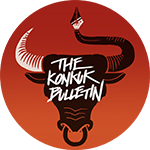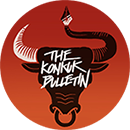Cosmetic brands considering the freedom of animals

Before producing the cosmetics people use in our daily lives, the companies making the cosmetics would test the products on animals. One of these tests is called the Draize test. Rabbits are usually used for cosmetics animal testing. The animal is placed inside a small box where its neck is fixed. Chemicals are then injected into its eyes every few hours. Unlike the human eyes, a rabbitʼs eyes cannot secrete tears to wash away the foreign matter. A rabbit, struggling with the pain of burning eyes, may even die as a result of broken neck bones. Rabbits who survive the pain for three days are eventually euthanized. Their eyes are collected and used for monitoring drug reactions. Nowadays, there are cosmetics brands that are naturalistic, avoiding these animal tests.
The Body Shop is a British naturalist cosmetics brand founded by Anita Roddick. She traveled around the world with anthropologists to gather local people’s know-how and information on personal beauty treatments and traditional natural ingredients. The natural material discovered by Anita Roddick during her trip was reborn as a material for cosmetics by people at The Body Shop. For example, when Anita Roddick visited Sri Lanka, she saw local women rubbing their faces with freshly cut pineapple to keep their skin healthy and clean. She learned that pineapples contain enzymes that remove dead cells from the skin and applied them to develop a “Pineapple Face Wash” product. In addition, Anita Roddick saw women rubbing their heads with juice extracted from the seeds of cocoa plants on the Polynesian island of eastern Oceania. Consequently, she added cocoa oil to hair products and made another cosmetic line. Many of The Body Shop’s products sold on the market have been developed through this process.
Rush is a British handmade cosmetics brand founded by Mark Constantine and Liz Weir. They bought ingredients such as oranges, lemons or cinnamon at supermarkets, and made soaps and cosmetics with them. Rush still sticks to this handmade method. It does not use the power of the machine and makes all products by hand. Following these beliefs, manufacturing plants are called kitchens. Rush has also unveiled pictures of employees making products out of materials purchased at the store. They make their own products by hand, just as they cook dishes with all kinds of fruits, vegetables, and herbs that they can actually eat in the kitchen. In addition, Rush utilizes story marketing, which combines stories with unique product names. For example, Rush’s “Turtle jelly bomb” is a sea turtle-shaped bath bomb. It featured plastic swallowed by a sea turtle with a white agar in its stomach. In fact, the white body of water in the bathtub caused by the jelly bomb is reminiscent of plastic floating in the sea, creating a chance to think about the seriousness of pollution in the marine environment.

